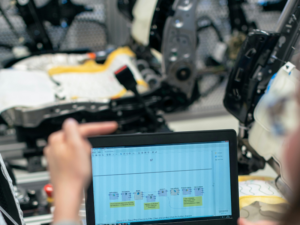
Integer posuere erat a ante venenatis dapibus posuere velit aliquet sites ulla vitae elit libero


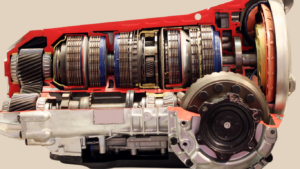



Bearings are precision-machined, highly engineered components that allow machines to operate at high speeds and carry enormous loads with ease and efficiency. Automobile, manufacturing, and aerospace are just a few of the industries that employ bearings.
Bearings that are offered by standard manufacturers like ZNL Bearings have a high degree of precision, dependability, and lifespan, as well as the capacity to rotate at high speeds with the least amount of noise and vibration.
In applications ranging from automobiles and aeroplanes to computers and construction equipment to machine tools and DVD players to refrigerators and ceiling fans, bearings can be found in a variety of configurations.
What exactly is a bearing? Well! It is not necessary to be a technical specialist to understand what it means.
Bearings are one of the most commonly used machine parts, thanks to their rolling motion, which makes almost all actions easier and reduces friction.
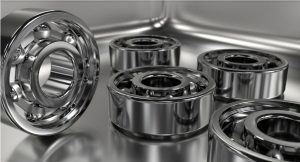
Bearings are used to reduce friction between moving parts and allow rotational or linear movement in a device. Bearings, on the other hand, are utilised to support other machine components by absorbing a range of loads.
Bearings serve two important purposes:
Bearings are made up of the following components in most cases:
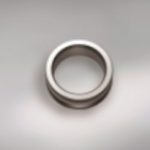



In addition to their design and operating mode, bearings can be classified based on the amount of allowed motion and the direction of the load applied to them. The design of bearings can be split into three categories: ball bearings, roller bearings, and thrust bearings.
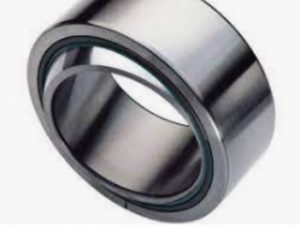 These bearings, which are also known as bushes, bushings, or sleeve bearings, are the most fundamental type of bearing. In addition, they are the least priced. The cylindrical shape of these components, as well as the fact that they include no moving parts, makes them ideal for use in machines that contain a rotating or sliding shaft component. Plain bearings are made of metal or plastic, and they can be lubricated with an oil or graphite to reduce friction between the shaft and the hole in which it rotates. Plain bearings are used in a variety of applications. Plain bearings are versatile and can be utilised in a variety of applications. These devices are commonly used in motions such as sliding, spinning, oscillating, and reciprocating motions, among others. Bearing rolling parts are available in a number of different shapes and sizes.
These bearings, which are also known as bushes, bushings, or sleeve bearings, are the most fundamental type of bearing. In addition, they are the least priced. The cylindrical shape of these components, as well as the fact that they include no moving parts, makes them ideal for use in machines that contain a rotating or sliding shaft component. Plain bearings are made of metal or plastic, and they can be lubricated with an oil or graphite to reduce friction between the shaft and the hole in which it rotates. Plain bearings are used in a variety of applications. Plain bearings are versatile and can be utilised in a variety of applications. These devices are commonly used in motions such as sliding, spinning, oscillating, and reciprocating motions, among others. Bearing rolling parts are available in a number of different shapes and sizes.
 With a more sophisticated design, rolling-element bearings are utilised to support heavier loads and are therefore more expensive. Typically, they are made up of rolling objects such as balls or cylinders that are put between a turning and an immobile race course. The movement of the rolling parts is caused by the relative motion of the races, which has little friction and little sliding and thus produces little drag.
With a more sophisticated design, rolling-element bearings are utilised to support heavier loads and are therefore more expensive. Typically, they are made up of rolling objects such as balls or cylinders that are put between a turning and an immobile race course. The movement of the rolling parts is caused by the relative motion of the races, which has little friction and little sliding and thus produces little drag.
These bearings are classified in 2 categories: ball bearings and roller bearings, which are further classified as: spherical roller bearings, cylindrical roller bearings, needle roller bearings, tapered roller bearings and gear bearings. Ball bearings are the most common type of bearing, while roller bearings are the most common type of roller bearing.
 As the name implies, these bearings have a layer of fluid between the bearing surfaces, which allows them to operate more efficiently. The fluid, which can be either a pressured liquid or a gas, is spread in a thin layer between the internal and external races, where it flows rapidly between the two races. Depending on the application, the fluid can be either a pressurised liquid or a gas. These types of bearings have virtually no sliding friction because the bearing surfaces do not come into direct contact with one another. As a result, the overall friction and wear of these components is significantly lower than that of rolling-element bearings.
As the name implies, these bearings have a layer of fluid between the bearing surfaces, which allows them to operate more efficiently. The fluid, which can be either a pressured liquid or a gas, is spread in a thin layer between the internal and external races, where it flows rapidly between the two races. Depending on the application, the fluid can be either a pressurised liquid or a gas. These types of bearings have virtually no sliding friction because the bearing surfaces do not come into direct contact with one another. As a result, the overall friction and wear of these components is significantly lower than that of rolling-element bearings.
 These bearings support the loads by utilising magnetic levitation, which eliminates the need for any surface contact within the bearing. Magnetic bearings have a far longer life than other types of bearings because they eliminate friction and material wear. They can also withstand the highest speeds of any type of bearing. Industrial applications such as petroleum refinery, natural gas processing, and electrical power generation, as well as optical systems with high rotational speeds and vacuum applications, frequently favour the use of these components over other types of components.
These bearings support the loads by utilising magnetic levitation, which eliminates the need for any surface contact within the bearing. Magnetic bearings have a far longer life than other types of bearings because they eliminate friction and material wear. They can also withstand the highest speeds of any type of bearing. Industrial applications such as petroleum refinery, natural gas processing, and electrical power generation, as well as optical systems with high rotational speeds and vacuum applications, frequently favour the use of these components over other types of components.
Other criteria for categorising bearings include the direction of load that they are capable of accommodating. Bearings are classified into three primary categories, according to this classification: radial bearings, thrust bearings, and linear bearings.
Radial bearings have contact angles less than 45°, whereas thrust bearings have contact angles greater than 45°. The type of bearing is determined by the contact angle between the bearing and the shaft: radial bearings have contact angles less than 45°, while thrust bearings have contact angles greater than 45°.
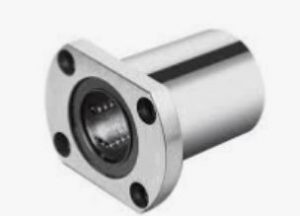 These are used to direct the movement of the moving parts in a straight line. They are also referred to as linear guides, and they are available in two basic shapes: round and rectangular.
These are used to direct the movement of the moving parts in a straight line. They are also referred to as linear guides, and they are available in two basic shapes: round and rectangular.
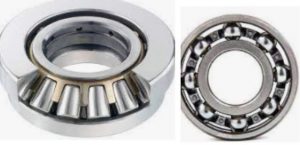 They have the ability to handle loads that are applied perpendicular to the shaft. They may also be able to withstand some axial loads in one or two directions, depending on the configuration. Radial bearings are mounted perpendicular to the axial line of the shaft and are referred to as radial bearings. Often, plain bearings (also known as journal bearings) are employed as radial bearings because of their simplicity.
They have the ability to handle loads that are applied perpendicular to the shaft. They may also be able to withstand some axial loads in one or two directions, depending on the configuration. Radial bearings are mounted perpendicular to the axial line of the shaft and are referred to as radial bearings. Often, plain bearings (also known as journal bearings) are employed as radial bearings because of their simplicity.
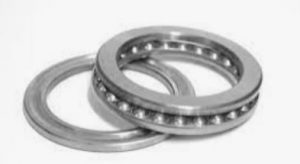 Unlike ball bearings, thrust bearings carry loads that are perpendicular to their axis of rotation, and as such they are designed to endure forces that are in the same direction as the shaft (axial loads).
Unlike ball bearings, thrust bearings carry loads that are perpendicular to their axis of rotation, and as such they are designed to endure forces that are in the same direction as the shaft (axial loads).
The design of these bearings allows them to carry pure axial loads in one or two directions, as well as some radial loads when necessary. However, unlike radial bearings, they are not capable of withstanding extremely high speeds, which limits their application.
 Basically, anything that has a higher level of precision than the industry standard is considered a precision bearing (i.e. ISO P5 or ABEC 5).
Basically, anything that has a higher level of precision than the industry standard is considered a precision bearing (i.e. ISO P5 or ABEC 5).
Without high-precision bearings of superior quality, it would be impossible to achieve the tight tolerances required in precision equipment.
The following are some examples of typical applications:
– Machine spindles for metal cutting and woodworking applications
– Turbochargers that operate at high speeds (Interestingly, manufacturers are beginning to turn to ceramics for diesel applications, because of the superior dimensional stability at elevated temperatures)
– Gyro Stabilizers are a type of stabiliser that is used in marine craft.
– Vacuum pumps are a type of vacuum pump.
– Rolling mills with high speeds
– Printing machines and equipment
– Precision ball screws are used in this application.
– Machines for balancing
– Live-in-care facilities
– To maintain these tight tolerances during operation, it is critical that the system operates in a clean environment that is free of contaminants.
Sliding bearings are commonly used in the structural support of bridges and industrial buildings, among other things. A sliding, rotating, oscillating or reciprocating motion can be achieved by using these devices.
Rolling Element Bearing – A rolling element bearing is a type of bearing that is primarily used for rotary applications. They are used in a variety of applications such as power generation, wind turbines, rolling mills, gear drives, and so on.
In most cases, ball bearings are used in machinery that has shafts that need to be supported for low friction rotation to function properly. They are used in a variety of applications including computer fans, aerospace jet engine shafts, skateboard wheels, and fidget spinner toys, among others.
 Roller bearings are widely used in a variety of applications ranging from heavy equipment and machinery to power generation, manufacturing, and the aerospace industry.
Roller bearings are widely used in a variety of applications ranging from heavy equipment and machinery to power generation, manufacturing, and the aerospace industry.
Jewel Bearings are used in a variety of applications including precision instruments, mechanical watches, galvanometers, compasses, dial callipers, turbine flow metres, and other similar devices.
In high-speed turbine applications, fluid bearings are used; for example, air hockey is based on the use of air bearings, and ice skating is based on the use of hydrodynamic fluid bearings.
Magnetic bearings are used in a wide range of industrial applications, including electrical power generation, petroleum refining, machine tool operation, and natural gas handling, to name a few. They are also used in the centrifuge and turbo-molecular pumps, among other applications.
Flexure Bearings – Because they operate by bending of materials that cause motion at the microscopic level, the friction is standard for this type of bearing. As a result, they are frequently employed in highly sensitive precision measuring equipment.
The concept of a world without bearings and the technology that they enable is nearly impossible to comprehend. Bearings are used in virtually every industry that makes use of components and pieces of equipment. The design and construction of the bearing, as well as the materials used, have an impact on performance. When selecting these bearings, it’s critical to consider a variety of factors such as bearing friction, temperature, and lubrication, among others.
At Znl Bearings, we provide you the genuine bearing and PT products you’re looking for in order to reduce downtime and ensure the quality you and your customers deserve.